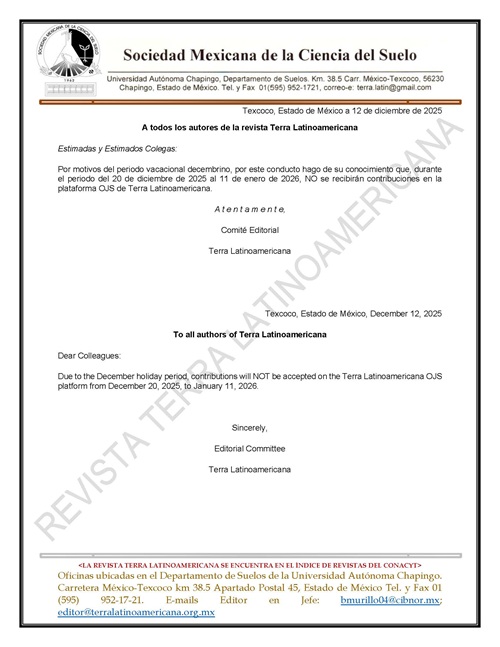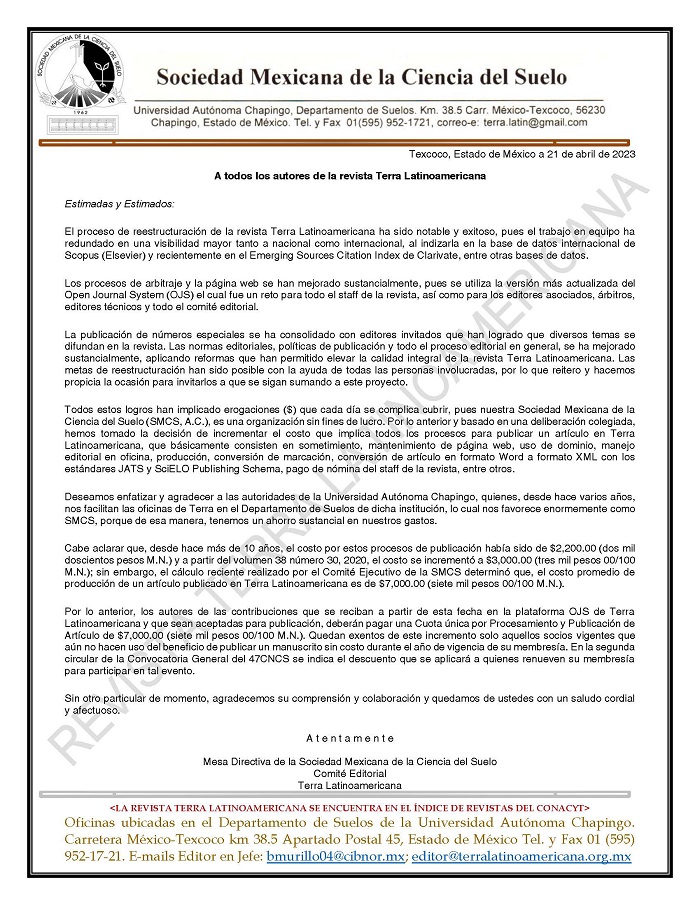Genotypic variability in physiological and numerical attributes of yield and industrial quality of canola
Keywords:
Brassica napus L., phenology, biomass production, oil rapeAbstract
The aim of this experiment was to analyze the phenology, yield and seed quality of seven cultivars (Hyola-61, Bio-Aureo, Gladiator, Inifap-2, Inifap-3, Inifap-4 and Inifap-5) of canola. The experiment was carried out in the winter-spring cycle, under irrigated conditions, in a complete block design with four replicates. Significant variation was observed among cultivars (P < 0.05) for the period emergence to two true leaves (A B2) and highly significant (P < 0.01) for the phenological periods two true leaves to apex change (B2-C2), apex change to visible flower bud (C2-D1), visible flower bud to beginning of flowering (D1-F1) and beginning of flowering to fruiting initiation (F1-G3). The cultivars Hyola-61 and Inifap-2 (1100 °Cd and 1143 ºCd to G3, respectively) were outstanding for their precocity, while the cultivars Gladiator (1354 ºCd to G3), Inifap-3 (1293.3 °Cd) and Inifap-4 (1293 ºCd) were late. The variables biomass , yield (Yield), number of pods, number of grains, and individual grain weight showed highly significant differences among cultivars. Inifap-2 (1618 g m-2) and Hyola-61 (1480 g m-2) excelled in biomass production and grain yield. The number of pods was positively correlated with seed yield; again, the outstanding the cultivars were Inifap-2 (7661 pods m-2) and Hyola-61 (7193 pods m-2). No relationship was found between seed yield and individual grain weight. As for the variables percentage protein (% protein) and percentage oil (% oil), there were highly significant differences (P < 0.01) between cultivars. Gladiator (22%), Inifap-2 (21.8%) and Inifap-3 (21.2%) were outstanding for high protein content, and Bio-Aureo (45.1%), Inifap-4 (44%) and Hyola-61 (40.7%) excelled in percent oil. Because of their high performance, the cultivars Hyola-61 and Inifap-2 are promising for commercial plantings of this crop in the Toluca- Atlacomulco Valley.
Downloads
Publication Facts
Reviewer profiles N/A
Author statements
- Academic society
- Terra Latinoamericana
- Publisher
- Mexican Society of Soil Science, C.A.
















